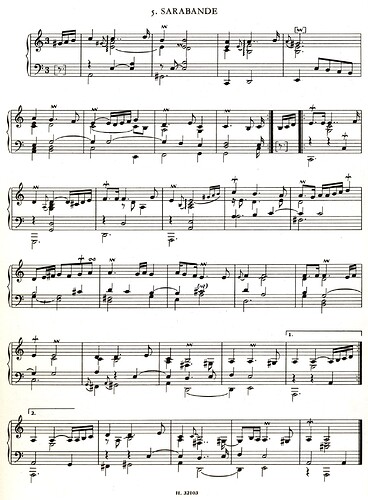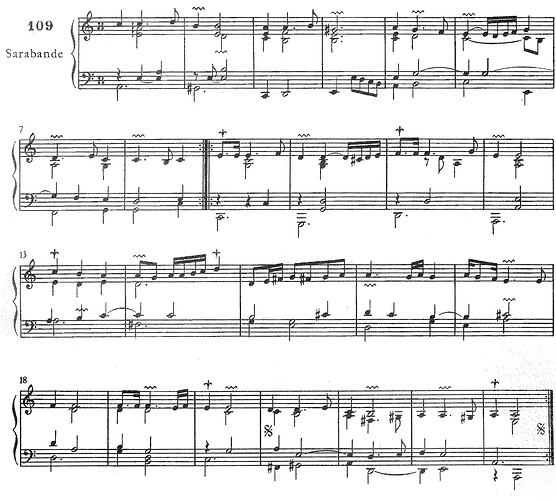A new edition is on the way from Lyrebird Music and will hopefully be available in September. There has been a need for this for some years, not least because Curtis is a bit out of date and relies on the Parville manuscript a little too heavily. Moroney’s masterwork is not readily available and has a few ambiguities and flaws that need addressing.
The problem with the two primary sources is in deciding which has the authority. Like Claudio, my suspicion is that Bauyn is of a closer generation to the autograph for several reasons:
- The pieces are grouped into suites in Parville and mixed with other composers’ suites, whereas in Bauyn, they are grouped in the same manner as we find in lute manuscripts, which is according to mode and then genre.
- Bauyn is nearly devoid of ornamentation. It is sensible to think that Couperin would not have ornamented music he was going to play himself since he would have known exactly where and when to place them.
Watermark analysis demonstrates that Bauyn is the earlier of the manuscripts by several years, though neither is likely to have been copied from the autograph: each has the same mistakes which means they share a common ancestry, though this was obviously corrupt in places.
Neither Curtis nor Moroney’s editions are anything other than excellent, though one is nearly 40 and the other 50 and it is time for a new look at things. Bruce Gustafson did this in his masterful edition of the Bauyn manuscript (Broude, New York, 2014), though this is no longer commercially available. One problem that needs redressing in Moroney’s edit is the diagonal lines found in the preludes of Bauyn, which were added because the copyist misaligned various melodic strands and needed to demarcate them. They are a distraction and, since they don’t appear in Parville, we may be sure they are of the Bauyn scribe’s making. Curtis tends to group notes in the preludes in clusters which is a little interpretative.
Oddly, neither have thought that some of the notes in the preludes might be wrong. The 12th LH note of the first prelude is a case in point. It is clearly an error and should have been fixed by both editors. F makes more sense than A, which is banal and lacks a rhetorical punch: with F we have a lovely augmented chord that is very characteristic of both Couperin and Froberger and it also follows a pattern that Couperin follows time and again. If we think in terms of a diapason course, F provides a strong bass line that progresses from to F#, G and then sets up the dominant for the first important cadence:
https://lyrebirdmusic.com/wp-content/uploads/2022/08/Screenshot-2022-08-03-at-18.36.56.png
While the dances are quite fine in both editions, there are problems. Curtis relies too heavily on Parville –– understandably given his situation at the time; Moroney relies a little to much on other sources. Gustafson, for example, gives a list of over 25 sources for the Hardel gavotte, though most of these are in individual manuscripts and so late that they cease to have any particular authority. For example, Moroney incorporates aspects of the same gavotte in GB-Lbl, Add. Ms. 39569 –– the Babell manuscript, which is from 1702. However, this is a very late source in comparison (LC had been dead four decades by that point), so unless someone wants to play the music as it would have been played at the beginning of the eighteenth century, Babell’s ‘improvements’ should have been ignored.
I have both editions and think them to be excellent. I have mentioned Gustafson and there are also good editions of the preludes by Colin Tilney (The Art of the Unmeasured Prelude, Schott) and Glen Wilson (Bärenreiter). Only the latter, though, is commercially available.
Anyhoo, just a little addition to the debate.
JB

